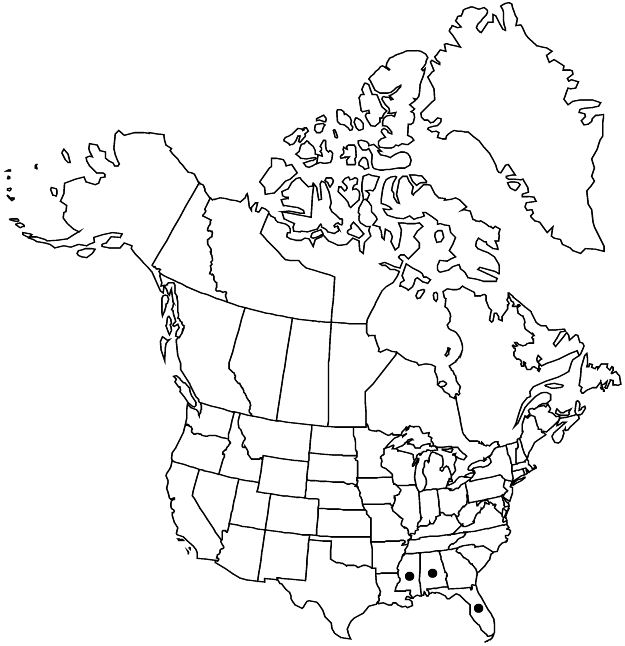Crocanthemum arenicola
in J. K. Small, Man. S.E. Fl., 879. 1933.
Herbs. Stems ascending or spreading to erect, 5–15(–20) cm, stellate-pubescent. Leaves cauline; petiole 0.5–2 mm; blade oblanceolate to lanceolate, 8–20(–28) × 2–4(–10) mm, surfaces stellate-tomentose abaxially, stellate-pubescent adaxially, lateral veins obscure abaxially. Inflorescences usually terminal, sometimes lateral, umbellate; chasmogamous flowers 2–10 per umbel; cleistogamous 2–10 per umbel. Pedicels (2.5–)5–10(–15) mm; bracts 1–3.5 × 0.3–0.6 mm. Chasmogamous flowers: outer sepals linear, 2–4 × 0.5 mm, inner sepals 4–8 × 3.5–4.8 mm, apex acute; petals obovate, 8–9.5 × 7.5–9 mm; capsules 3-valved, 3.6–5.4 × 2.4–3.6 mm, stellate-pubescent distally. Cleistogamous flowers: outer sepals linear, 1–2 × 0.4 mm, inner sepals ovate, 3.6–5.6 × 2.2–2.8 mm, apex acute; capsules 3–4.6 × 2.4–3.4 mm, stellate-pubescent distally.
Phenology: Flowering Mar–Apr.
Habitat: Maritime sand dunes and interdunes among pine-oak scrub
Elevation: 0–10 m
Distribution

Ala., Fla., Miss.
Discussion
Crocanthemum arenicola occurs in 11 contiguous counties, from Franklin in Florida to Harrison in Mississippi. Only C. arenicola and C. nashii possess stellate-pubescent ovaries and capsules; they are allopatric, occupy different habitats, and present no identification difficulties.
Selected References
None.